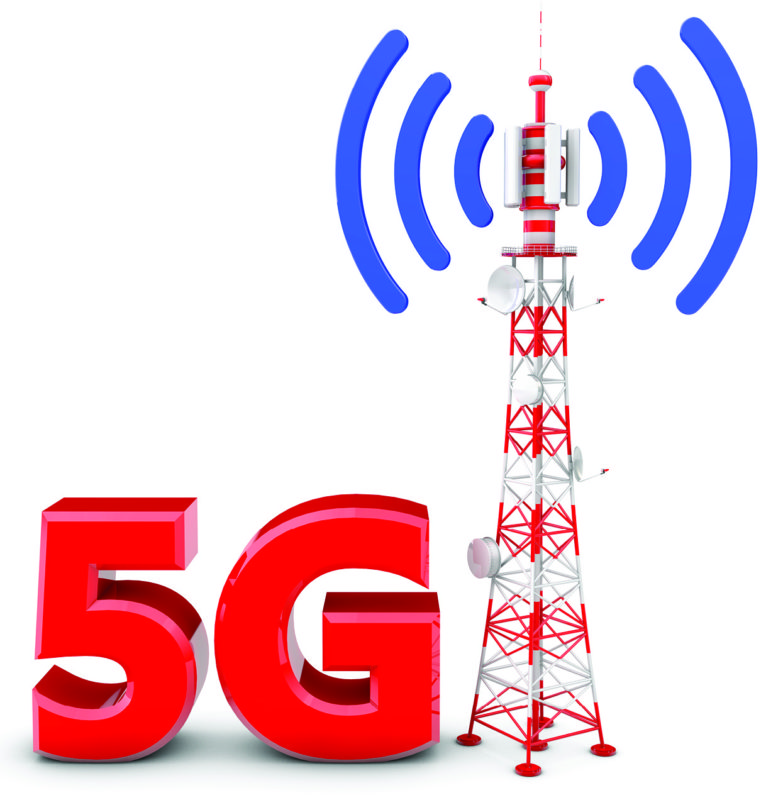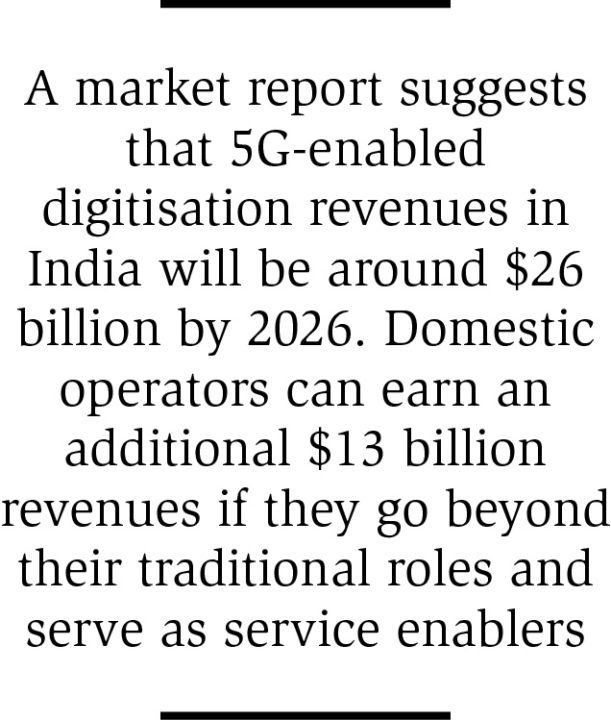The abysmal state of healthcare in India can be attributed to lack of adequate number of healthcare experts and specialists in the country. And for a long time now we have been struggling to make healthcare services affordable but without success.
With experts betting big on 5G technology to enhance connectivity, we can expect to address this grave issue soon.
Rajan Mathews, director general, Cellular Operators Association of India (COAI), says, “The latest iteration of mobile broadband technology, 5G, will bring in new unique network and service capabilities.”
“It will be a thousand times faster than 4G and will provide Internet access in areas that have yet not been tapped because of various roadblocks,” he adds.
What went wrong with 4G
At present, India is struggling with 4G technology. 4G technology is supposed to use orthogonal frequency-division multiplexing (OFDM) instead of time-division multiple access (TDMA) in order to minimise interference and cross-talk.
According to the International Telecommunications Union (ITU), a 4G network should enable a mobile device to exchange data at 100Mbps as against 3.84Mbps in 3G. The main aim of graduating to 4G from 3G was to offer long-range, high-speed wireless communication.
Interestingly, of the 2355MHz spectrum auctioned across the seven bands, only 40 percent was sold with no buyers for 700MHz and 900MHz bands. There are only a handful of companies in 2300MHz, while majority is operating in the 1800MHz band.
It should be noted that telecom operators bid selectively to fill gaps in the network coverage and enhance spectrum portfolio, especially for 4G services.
Despite being rolled out by telcos, 4G is still in the nascent stage. So what really went wrong?
Telcos have been doling out 4G despite giving a miss to 3G stage of broadband mobile communications. While this is not completely true, it is worth noting that telcos’ reluctance to invest in the requisite infrastructure for 3G is the prime reason behind 4G’s failure.
The poor and limited coverage even in metros is because the country still doesn’t have adequate number of 3G-enabled towers.
According to a report, of the 350,000 towers, only 60,000 are 3G-enabled, which means that the promised speed is not available to everyone. The inconsistency in the speed as well as quality can be attributed to lack of a fibre-optic system which would have supported high bandwidth of the 3G technology—a must for high-bandwidth networks.
To deploy 3G and 4G, telcos have been using microwave links to support the towers. And while 3G network was supposed to offer data speed of 3Mbps to at least 21Mbps, the actual speed was lower than 1Mbps, blurring the line between 2G and 3G.
At best, 3G was used to stream audio and videos at an agonisingly low speed.
This explains why 4G failed to take off in India. The jump from 2G to 4G without working on the requisite infrastructure, i.e., fibre-optics base for 3G, did hamper 4G with quality of service and data speed remaining disappointingly low.
However, network providers have now realised that in order to successfully implement the next generation of wireless communication, i.e., 5G, they would need to address this gap. And thus, they have started investing in fibre-optic communications extensively.
As per industry experts, currently, India is installing only 15 million kilometres of fibre every year, as against 50 million kilometres of fibre required for efficient and effective implementation of both 3G and 4G services.
Reliance Infotel is setting up its own fibre-optic base for not only inter-city communication but intra-city services as well. Nevertheless, installing the fibre-optic base is not an easy process as it means digging at several places to put fibre ducts across the city. This could be one plausible reason why telcos did not switch to fibre-optics backbone earlier.
5G: Taking it to the next level
The next-generation wireless broadband technology will make the world smarter. From multimedia messaging to video streamlining, from connected vehicles to autonomous driving, from Nano IoT to implantable wearable—every application is expected to move to the next level.
5G is hopping to a new level where innumerable devices can be connected to each other using D2D standard and where security breach is extremely difficult. This D2D technology would be beneficial even when the network is out of range. A wide array of sensors network can be used for home security systems, energy grids and entertainment.
Basically, 5G is 4G technology integrated with Worldwide Wireless Web. Currently, in terms of bandwidth, it offers more than 1Gbps as against 200Mbps offered by 4G.
Communications sector is going to see a massive increase in demand once 5G takes shape. Therefore to supersede the existing technology, 5G needs to lower its bit rate value. While we have discussed data speeds of both 3G and 4G earlier in the article, 5G is expected to be at least ten times faster than 4G, i.e., at least 10Gbps.
In order to support such high bit rate, the latency (the time taken to stream a video or any other function) needs to be very low at around one millisecond.However, a few telco players have ambitious expectations as far as 5G is concerned.
According to a report by 5G.co.uk, experts project that 5G networks will be capable of data transfer at speeds of up to 20Gbps. Similarly, Nokia expects 5G to enable streaming of an 8k video in 3D.
Experts suggest that 5G will provide ultra-fast, ultra-reliable and ultra-high-capacity transmission at low latency, making communication and streaming faster.
The current scenario
Globally, work has started on 5G. The US is one of the first countries to usher in 5G by opening up the high-band spectrum for the technology. According to reports, the Federation Communication Commission (FCC) in the US has already started work in the area.
Samsung Electronics America along with Cisco partnered with American telecom major Verizon to announce 5G trials in eleven cities of the US back in February this year. The multi-vendor end-to-end 5G trial was the first in the field that was launched in Michigan.
Trials for at least five cities in the US are scheduled by the second quarter of FY18, while a total of eleven pilot trials will be carried out by the end of 2017.
The trial network has a 5G virtualised packet core as part of the Cisco Ultra Services Platform with Cisco Advanced Services and Samsung virtual RAN (vRAN) solutions.
It has been paired with Samsung’s 5G radio base stations and 5G home routers, which will deliver broadband services to Verizon’s customers who have signed up for the trials.
The three companies have followed Verizon’s 5G Technical Forum specifications—a series of network vendor interoperability tests to demonstrate seamless inter-working between core network, radio edge and user devices to exhibit next-generation network virtualisation via multi-vendor support.
“We’re very excited about the possibilities this opens up in terms of network architectures, particularly in view of 5G’s aim to connect new industries and empower unique service scenarios,” said Woojune Kim, vice president and head of Next Generation Strategy, Samsung Electronics, in a press release.
He added, “A shift towards network function virtualisation creates new opportunities in the industry value chain, enabling collaboration with pioneering industry leaders to bring greater value to consumers and businesses.”
Sharing a similar sentiment, Sathya Atreyam, research manager, 5G and IoT Infrastructure, IDC, notes that the success of 5G depends on developing a framework that is both robust and also offers a frictionless end-to-end convergence of radio access and packet core 5G architecture.
Experts note that these trials have thrown light on the readiness of key 5G technologies, thus paving way for commercial deployment of 5G networks. It also highlights that network operators can deploy 5G networks as per their market’s needs by selecting individual network infrastructure components from a variety of vendors.
In the UK, the University of Surrey’s 5G Innovation Centre has conducted trials and claims to have achieved higher speeds of about one terabit per second (1Tbps)—which is over 60,000 times faster than the 4G speeds offered.
With such an enormous speed, users would be able to download a file around a hundred times larger than a full movie in just three seconds. However, whether this speed can be achieved in real time is still questionable.
Chinese smartphone maker Huawei too has tied up with the university to explore 5G technology along with other interest areas.
South Korea aims to release its 5G technology during the 2018 Olympics, using high data transmission frequency of up to 3.2Gbps.
Japan too plans to deploy 5G mobile services by 2020 and has already started field trials in Tokyo and remote areas as well. The first trial, carried out on motorsport racing circuit in Shizuoka, achieved data speed of over 2.5Gbps in a vehicle moving at a speed of 150kmph.
The trial was conducted by NTT Docomo in partnership with Samsung Electronics.
The Japanese telecom giant also partnered with Huawei for a trial using 23 connected devices, which achieved a cumulative 11.29Gbps of data throughput with a latency level below 0.5 millisecond in October 2016. The government aims to see if 5G network can be used in high-speed trains as well.

Offering boundless possibilities
5G is touted as the next big revolution in the wireless network. There are huge expectations from this technology as it is expected to offer solutions and enhance not just plain-vanilla communications but also connectivity.
Thus, in addition to faster video streaming, 5G will find three key application areas. According to draft recommendations of ITU-Radio communication Standardization Sector (ITU-R), 5G will be widely used for enhanced mobile broadband, massive machine-type communications and ultra-reliable, low-latency communications.
5G technology will enhance mobile broadband by including Gbps data rates for applications like virtual reality while also supporting extensive growth in data traffic.
As far as ultra-reliable communications are concerned, 5G’s low latency will ensure faster communication with fewer glitches, thus increasing the efficiency and reducing the lag time in several industries.
Sectors such as healthcare, automotive (where smart cars and intelligent mobility concepts are highly dependent on 5G) and the Internet of Things (IoT) stand to benefit significantly from this technology.Mathews shares, “5G will be a key enabler for the IoT by providing a platform to connect a massive number of sensors and rendering devices. It will help service providers overcome present limitations of bandwidth, capacity and infrastructure.”
Earlier this year, Ericsson, in partnership with SK Telecom and BMW, disclosed the 5G outdoor mobility trial in South Korea. This included the first multi-vehicular 5G trials. The trials were conducted on a 5G test network that was installed in the car test track of German auto giant BMW in Yeongjong-do city.
The South Korean wireless communication major, SK Telecom, along with Ericsson, deployed network slicing and 5G radio network infrastructure to completely cover trial tracks in the BMW driving centre. The trials were completed successfully and showed that 5G can support V2X (vehicular connectivity) services that require low latency and consistently high bi-directional throughput.
The trial also highlighted new key 5G capabilities with multi-site, multi-transmission points with multiple devices operating in the millimeter-wave frequency band.
In terms of machine-type communications, 5G will support massive low-cost IoT connections and with wide coverage, providing connectivity in inaccessible areas as well. This is useful for industries that involve exchange of large amount of data.
For instance, in fleet management, a 5G network will ensure smooth connectivity by sending updates on engine performance, total miles driven and faults identified in the vehicle. Thus, it would obviate unnecessary costs, optimise drive time as well as maximise fuel efficiency.
Besides, experts suggest that 5G will soon become the underlying fabric of our ecosystem, connecting all industries with each other. Robotics and automation, artificial intelligence, avionics and agriculture are just a few other industries that will certainly enjoy what 5G has to offer.
Where India stands
Currently, telecom players in India are exploring different upgraded versions of 4G, such as 4.5G, 4.5G Pro and 4.9G, to improve coverage and add capacity to the existing network.
Moving on to 5G, while this technology is set to be launched in 2020, both the government and the private sector have already started work on it.
According to a report, the government has created a research team to do the ground work on 5G in a bid to understand the technology better. It has already filed 100 patents so far. These patents will enable India to generate indigenous intellectual property (IP), thus giving bargaining power to the country.

Apart from this, telecom giant Ericsson has signed an MoU with IIT Delhi to jointly dole out ‘5G for India’ programme. The company will set up an incubation centre as well as a 5G test bed to work on the technology. In line with Prime Minister Narendra Modi’s Digital India initiative, the programme will help in application development for startups and industries.
Other telecom majors such as Airtel and BSNL have joined hands with Nokia to roll out 5G network in India. The MoU signed between them also covers related infrastructure development.
Similarly, Reliance Jio has partnered with Samsung to bring 5G network to India as well as enhance its existing LTE network. A market report suggests that 5G-enabled digitisation revenues in India will be around $26 billion by 2026. Domestic operators can earn an additional $13 billion revenues if they go beyond their traditional roles to serve as service enablers.
However, all this can be achieved only if India successfully overcomes the many challenges in implementing 5G. Significant investment is required to upgrade the existing infrastructure to 5G. Security and privacy too are major concerns.
Increasing the connectivity is yet another challenge. According to Telecom Regulatory Authority of India (TRAI), India had 391.5 million subscribers at the end of December 2016 and a lot of work needs to be done in order to bring everyone into the system.
This also implies that consumers will have to upgrade to new smartphones in order to enjoy 5G as this technology is not compatible with previous versions of phones.
Lastly, the biggest concern is the availability of spectrum. 5G requires a new high-frequency band to achieve the desired data speed.
What’s next
Experts forecast that once 5G is successfully deployed, it will be upgraded with satellite networks that include telecom satellites, earth imaging satellites, and navigation satellite networks.
Proposals are floating around that suggest the installation of nano antennae at different geographical locations such as roadsides, villages, malls and hospitals to broadcast high-speed electromagnetic signals. High-speed optical fibres will be introduced to carry high-speed broadband signals. And it seems like sea to space connectivity would be possible once 5G is deployed completely!








Wonderful Article! Great coverage and depth of understanding. Would be great if we could connect as I am a Research Analyst covering the TMT sector in the Indian markets.